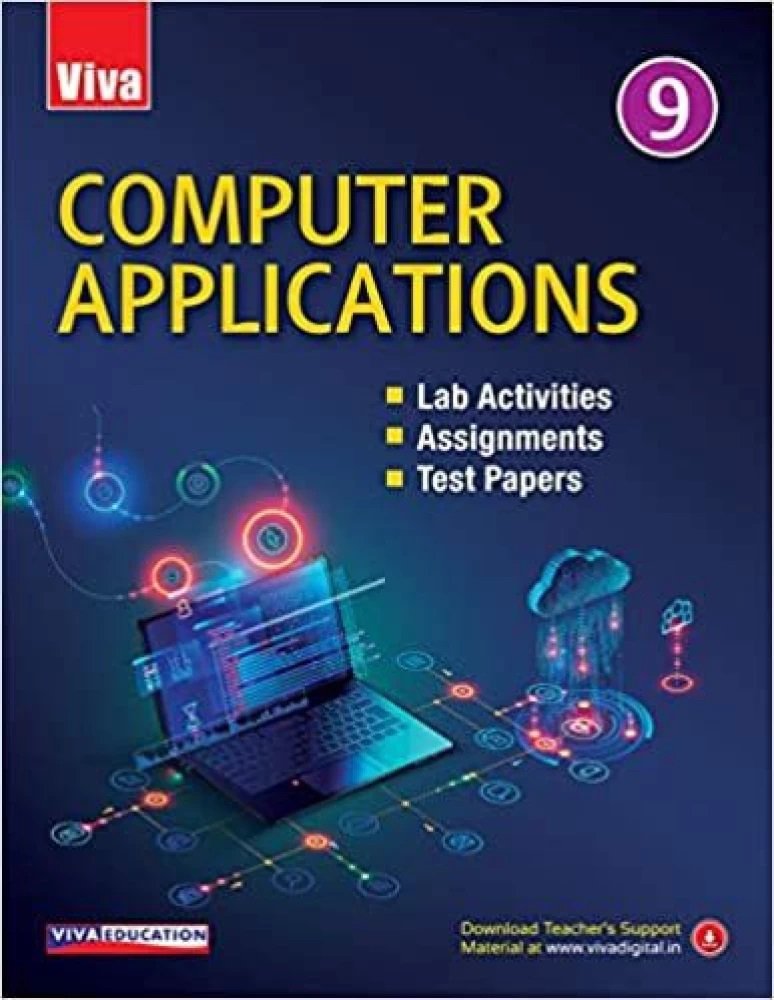The Class 9 Computer Science curriculum introduces students to foundational computing concepts. These concepts shape their understanding of technology and its applications in real life. The computer book for Class 9 serves as a crucial resource, providing structured lessons, exercises, and projects to build a strong foundation in computing.
Importance of a Computer Book for Class 9
Understanding computers has become a necessity in today’s digital world. A well-designed computer book provides:
- Structured learning material: It organizes lessons into manageable units, ensuring students can grasp each topic before moving on to the next.
- Practical exercises: Hands-on projects and assignments help reinforce theoretical concepts.
- Skill development: Exposure to coding, data management, and logical thinking equips students with essential skills.
By following the computer book, Class 9 students gain a clear roadmap to explore technology effectively.
Key Features of the Computer Book for Class 9
1. Aligned with Curriculum Guidelines
The computer book for Class 9 is designed to align with national and state-level education board syllabi. This alignment ensures that students learn the required concepts and perform well in exams.
2. Comprehensive Theoretical Knowledge
Each chapter begins with detailed explanations of key concepts such as:
- Computer fundamentals: History, types, and components of computers.
- Operating systems: Basics of Windows, Linux, or macOS.
- Applications of technology: Uses in various fields like education, healthcare, and entertainment.
3. Coding and Programming Basics
One of the highlights of the Class 9 computer book is its focus on programming. Popular topics include:
- Introduction to programming languages: Python, C++, or Java.
- Algorithms and flowcharts: Tools for solving logical problems.
- Small projects: Building basic programs like calculators or data organizers.
4. Practical Assignments and Projects
Practical tasks such as creating documents, managing spreadsheets, or building simple web pages form an integral part of the book. These tasks:
- Encourage creativity.
- Strengthen problem-solving skills.
- Familiarize students with real-world applications of computing.
5. Visual Aids and Illustrations
Images, diagrams, and screenshots make learning engaging. For instance:
- Labeled diagrams of hardware components simplify technical details.
- Step-by-step guides ensure students can replicate processes like creating folders or installing software.
Topics Covered in Class 9 Computer Book
1. Introduction to Computers
This section lays the groundwork, covering:
- The evolution of computers: From early mechanical devices to modern systems.
- Hardware vs. software: Understanding the building blocks of a computer.
- Types of computers: Supercomputers, personal computers, and mobile devices.
2. Basics of Networking
Networking is a crucial topic in modern computing. The book introduces concepts like:
- Types of networks: LAN, MAN, and WAN.
- Networking devices: Routers, switches, and modems.
- Internet fundamentals: IP addresses, DNS, and email systems.
3. Office Tools and Applications
Students learn practical skills using tools such as:
- Word processors: Creating and formatting documents.
- Spreadsheets: Performing calculations and analyzing data.
- Presentations: Designing slides with text, images, and animations.
4. Cybersecurity and Ethics
With increasing reliance on digital platforms, this topic is vital. The book covers:
- Online safety practices: Password management and avoiding phishing scams.
- Cyber laws: Understanding digital rights and responsibilities.
- Ethical computing: Avoiding plagiarism and respecting intellectual property.
How the Computer Book Enhances Learning
1. Makes Technology Accessible
The book simplifies complex concepts, making them accessible to beginners. Step-by-step instructions ensure that even students with no prior experience can follow along.
2. Encourages Interactive Learning
Practical tasks and group projects encourage collaboration among students. Working on real-world problems boosts confidence and teamwork skills.
3. Prepares Students for Future Careers
By introducing coding, data handling, and problem-solving, the book equips students with skills relevant to future careers in IT, engineering, and beyond.
Tips for Using the Class 9 Computer Book Effectively
1. Follow the Sequence
The chapters are organized to build upon each other. Avoid skipping topics, as each concept forms a foundation for the next.
2. Practice Regularly
Theory alone isn’t enough in computing. Dedicate time to practice coding and other practical exercises included in the book.
3. Collaborate and Discuss
Form study groups to:
- Share insights.
- Solve problems collaboratively.
- Explore additional applications of concepts.
4. Seek Additional Resources
While the book is comprehensive, students can benefit from:
- Online tutorials: For in-depth programming guidance.
- Open-source tools: To experiment with advanced technologies like AI or IoT.
The Role of Teachers in Using the Computer Book
Teachers play a critical role in guiding students through the curriculum. They can:
- Design interactive activities based on book content.
- Provide real-life examples to contextualize lessons.
- Encourage students to pursue projects beyond the syllabus.
Conclusion
The Class 9 computer book is more than just an academic resource. It is a gateway to understanding and mastering technology. By providing a blend of theory, practical exercises, and real-world applications, it ensures that students are prepared for the challenges of a digital future.
For students aspiring to thrive in a technology-driven world, this book serves as a stepping stone toward success.
